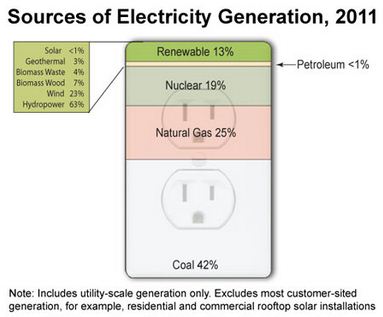2020 - Demographics
While the present "globalization" phenomenon is driving economic change in Asia and elsewhere, demographic changes will also impact the geo-political scene for 2020 and beyond:
- U.S. population growth will continue to be among minorities which may lead to
- a lower percentage of the population with high school educations (see U.S. graduation rates by race)
- a lower percentage of the population with bachelor or advanced degrees (follows from overall lower high school graduation rates)
- a higher percentage of marginally employed or unemployed adults
- greater fragmentation along "ethnic" lines
Bottom Line: Population changes will likely increase social problems and economic strain without adding to U.S. competitiveness in the global markets
- China will have the largest absolute population, but
- a significant trend toward a much older average age
- a slowing growth rate may occur with the one-child policy
- a larger segment of very-well educated people
- a very large segment of marginally-educated people
- a growing overall demand for consumer goods and services
- a growing overall demand for manufacturing and energy resources
Bottom Line: Population changes will improve China economically and enable it to become an economic and military superpower, but internal disparities will be a challenge
- India will have the second largest population
- a growing population with no population control policy which may eventually lead to India being the most populated country
- a significant Muslim minority population and possible unstable relations with neighboring Muslim nations
- a larger segment of very-well educated people
- a very large segment of marginally-educated people
- a growing overall demand for consumer goods and services
- a growing overall demand for manufacturing and energy resources
Bottom Line: Population changes will improve India economically and enable it to become an economic and military superpower, but internal disparities will be a challenge and Muslims citizens and neighbors may lead to serious economic backsliding overall for India
- Europe will have a stable or declining indigenous population but at growing Muslim immigrant population from Southwest Asia which may
- increase ethnic and religous tensions and violence
- increase the strain on the social support systems
- shift focus from Europe-American commerce to Europe-Western Asia issues
Bottom Line: Europe will have a changing population mix that may cause serious ethnic and religious confrontation that could disrupt its potential to rival the U.S. in the form of a United Europe
- South America will be split between the prosperous south and east and the backward and corrupt west and north. Brazil and Argentina populations will continue to grow and they will become global suppliers of food products and other materials supplanting other major producers.
- China will attempt to have close ties with Brazil and Argentina and, as a major customer, attempt to use its influence there as part of overall competition with the U.S.
- U.S. will be a net importer of products from South America and lose more of its overall exporting markets to South America
Bottom Line: Brazil and Argentina will grow and prosper while the remainder of South and Central America will have increasing populations and increasing problems
- North and Central Asia will fall behind the rest of Asia and Europe. Russia will have a stable or declining population while Central Asia will have a growing, but poorly educated Muslim population that will cause political instability to its north and south.
- Russia may be able to exploit its natural resources provided that its government can stabilize the economic system and address the issue of an older population
- Central Asian countries have no apparent population, resource, policy, or skill advantages to be competitive any time during the next century
- Central Asian countries will continue to seek independence and isolation and will be a non-factor or negative factor in overall Asia
Bottom Line: Russia's population will probably stagnate or decline and it will slide backward in the world's economic competition. Central Asian countries will have increasing populations and be non-players economically, but the sources of conflict throughout Asia
- Africa will have growing populations in some areas and declining populations in others if AIDS is not quickly addressed.
- North Africa will align with the Middle East and Central Asia in an attempt to reinforce Muslim authority through Europe and Asia as overall Muslim population grows
- Sub-Sahara Africa will continue to be isolated from the rest of the world by political unrest and depopulation from AIDS unless that disease can be controlled very soon
Bottom Line: Africa will continue to be two distinct populations - North and South going different directions, but both likely to be the sources of political unrest






